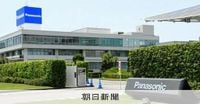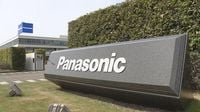On May 9, 2025, Panasonic Holdings (HD) announced a drastic restructuring plan that will see the company reduce its workforce by 10,000 employees, approximately 4% of its total workforce of about 230,000. This decision comes as part of a broader strategy aimed at improving profitability amidst ongoing challenges in several of its business sectors.
The planned layoffs will affect both domestic and international employees, with 5,000 positions cut in Japan and another 5,000 overseas. The company anticipates incurring structural reform expenses amounting to 130 billion yen in the fiscal year ending March 2026, largely due to these personnel reductions and the consolidation of operations.
President Kazuhiro Tsuga had previously indicated in February 2025 that the company would promote early retirement options in an effort to address the sluggish performance that has plagued Panasonic for some time. "We are aiming for significant improvements in our business performance," Tsuga stated, emphasizing the need for a strategic overhaul.
The restructuring plan is not just about reducing headcount; it also involves a comprehensive review of Panasonic’s operations. The company is set to withdraw from unprofitable sectors, including its television and kitchen appliance divisions, which have been identified as lacking growth potential. By the end of fiscal year 2026, Panasonic aims to implement drastic measures to either divest these businesses or transfer them to more suitable owners.
This move echoes Panasonic’s history of significant workforce reductions, reminiscent of the early 2000s when the company faced similar challenges. In 2001, during the collapse of the IT bubble, the company solicited early retirements, resulting in 13,000 employees leaving. Again in 2011, Panasonic reduced its workforce by over 30,000 due to the absorption of Sanyo Electric and subsequent restructuring efforts.
As Panasonic navigates these tumultuous waters, it is also focusing on leveraging new technologies, particularly artificial intelligence, to enhance its corporate services. The company’s strategic pivot towards AI and other cutting-edge technologies is seen as vital for its long-term sustainability and competitiveness.
Despite the impending layoffs, Panasonic has managed to maintain profitability for 12 consecutive years, a streak that has continued since it last reported a deficit in the fiscal year ending March 2013. The company’s financial health is reflected in its equity ratio, which stands at around 50%, a figure that is considered robust among major manufacturers.
However, the latest financial results released on the same day as the announcement reveal a slight decline in sales. For the fiscal year ending March 2025, Panasonic reported a revenue of 8 trillion 458.1 billion yen, which is a marginal decrease from the previous year. Net profit also fell by 18%, amounting to 366.2 billion yen. Looking ahead, the company forecasts an 8% drop in revenue for the fiscal year ending March 2026, projecting sales of 7 trillion 800 billion yen and a further 15% decline in net profit to 310 billion yen.
Investors have expressed concerns regarding the duplication of functions within Panasonic’s indirect departments, a challenge that has been highlighted over recent years. The company’s restructuring efforts are aimed at addressing these redundancies and streamlining operations to enhance overall efficiency.
As Panasonic embarks on this significant restructuring journey, it faces the dual challenge of improving profitability while managing the human impact of such a drastic workforce reduction. The company is committed to ensuring that the remaining workforce is equipped to drive future growth and innovation.
In summary, Panasonic’s decision to reduce its workforce by 10,000 is a bold step in its ongoing efforts to reshape the company and adapt to changing market conditions. The focus on structural reforms and the withdrawal from unprofitable sectors reflect a strategic pivot aimed at securing a more sustainable future for the company. As the landscape of the electronics industry continues to evolve, Panasonic’s ability to navigate these changes will be crucial in determining its success in the years to come.



